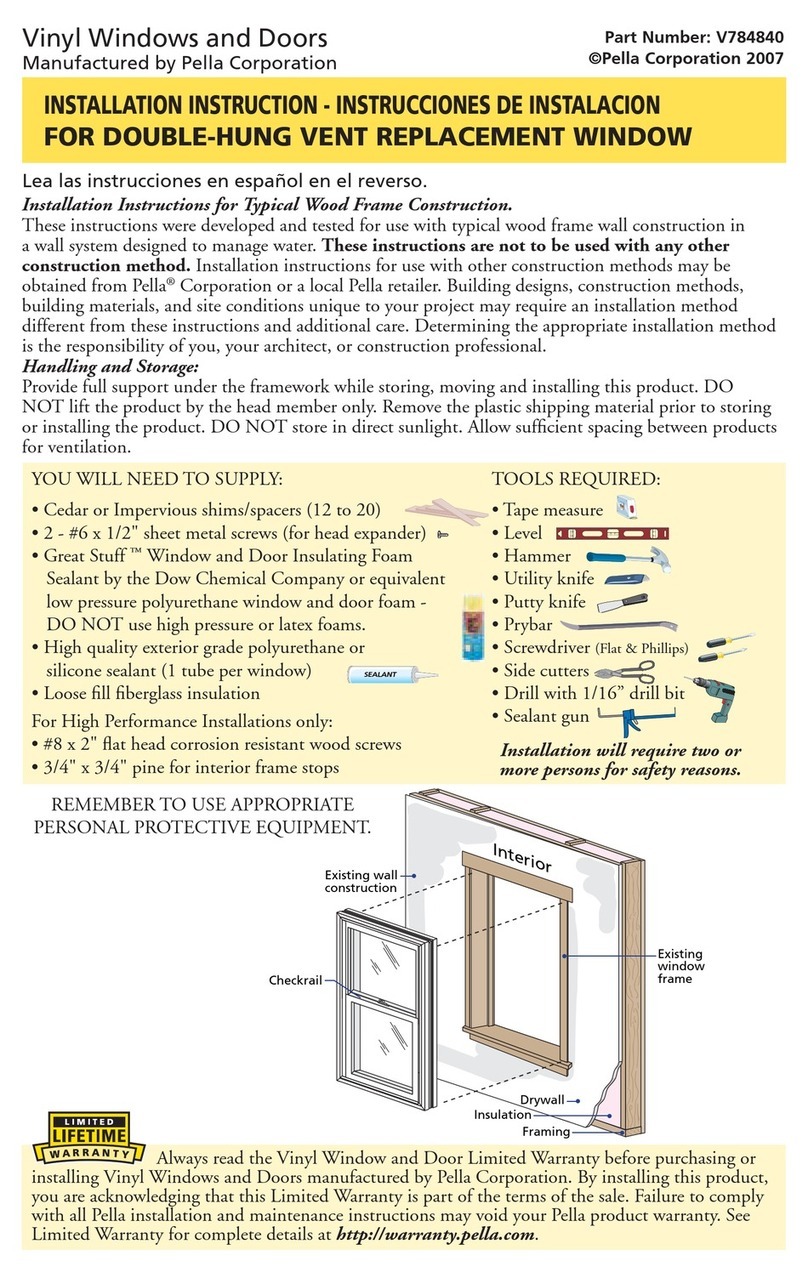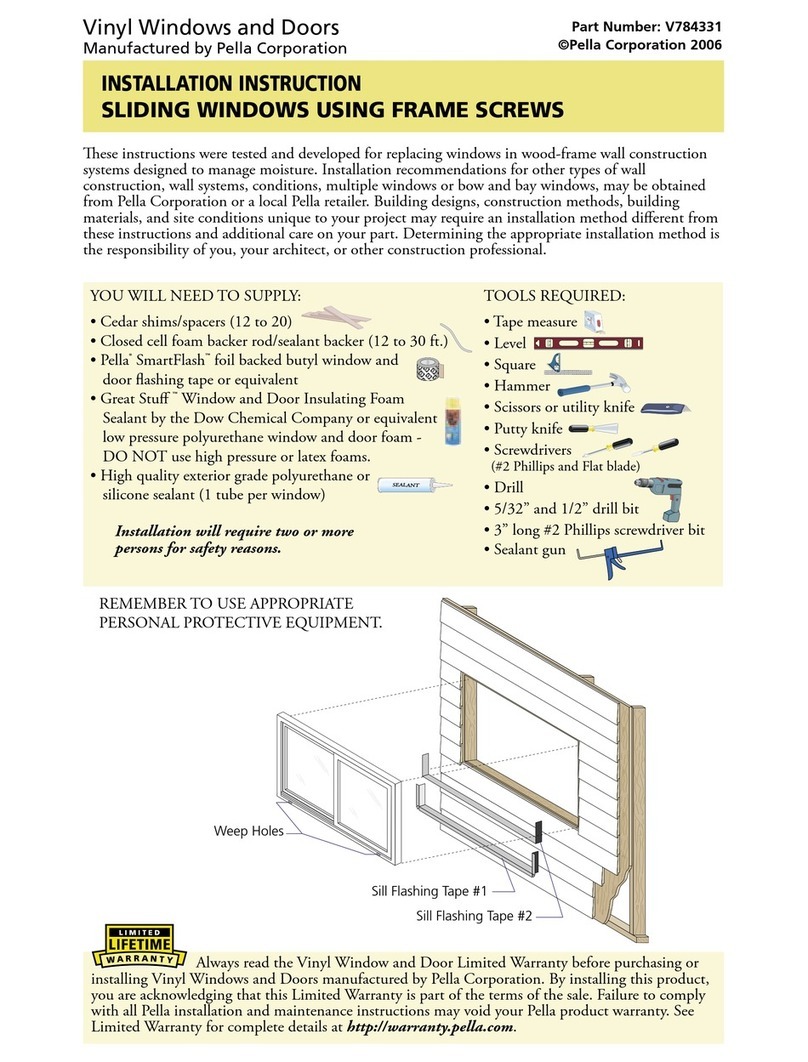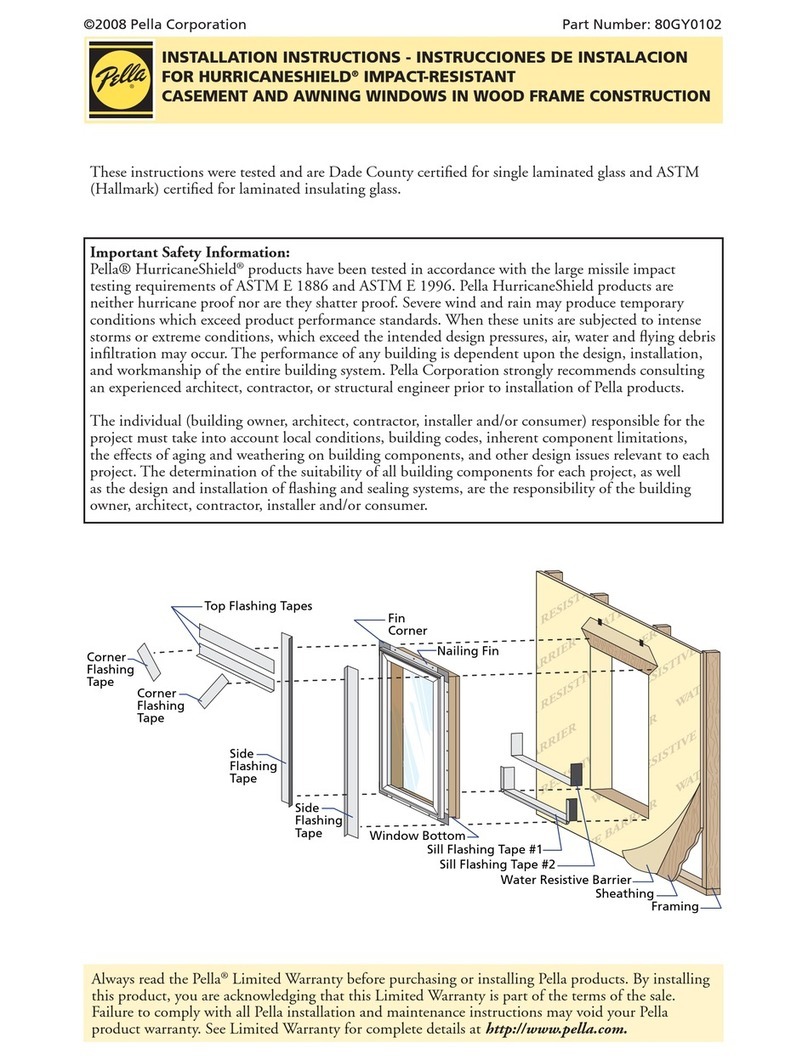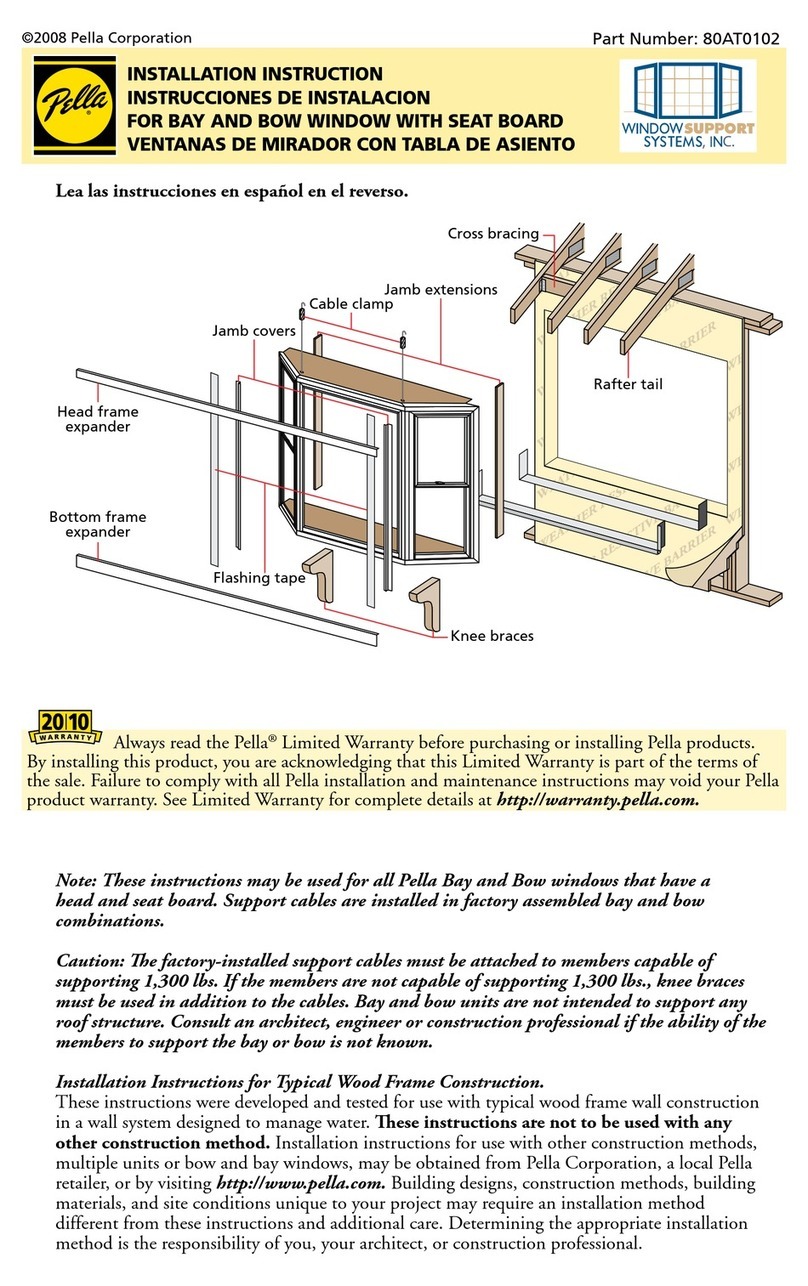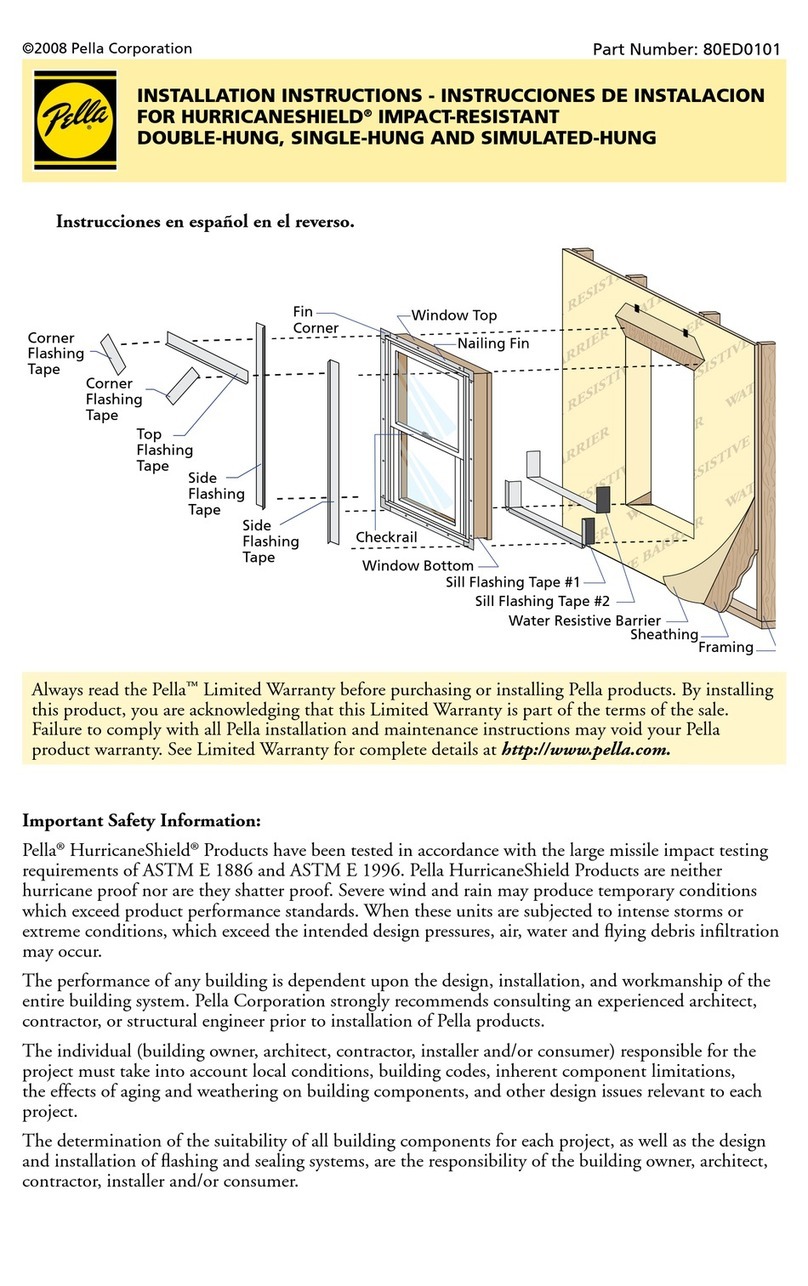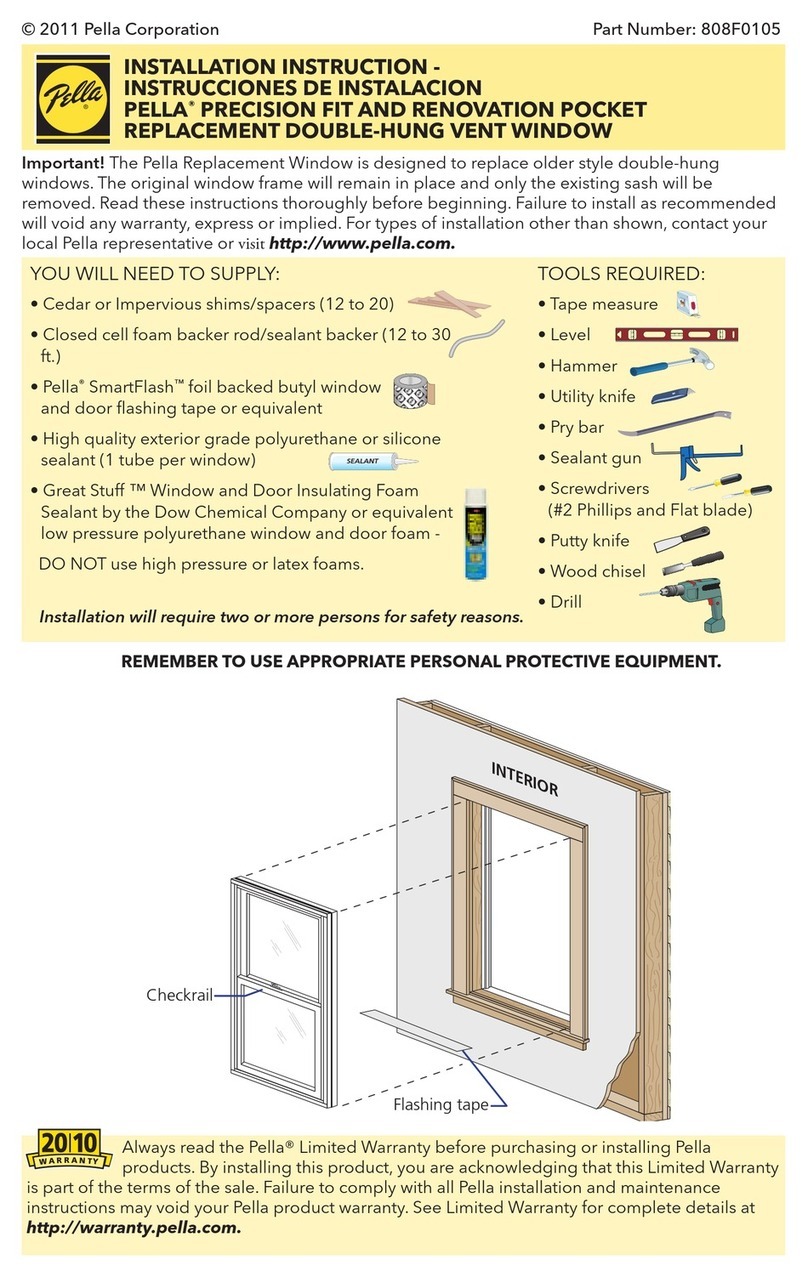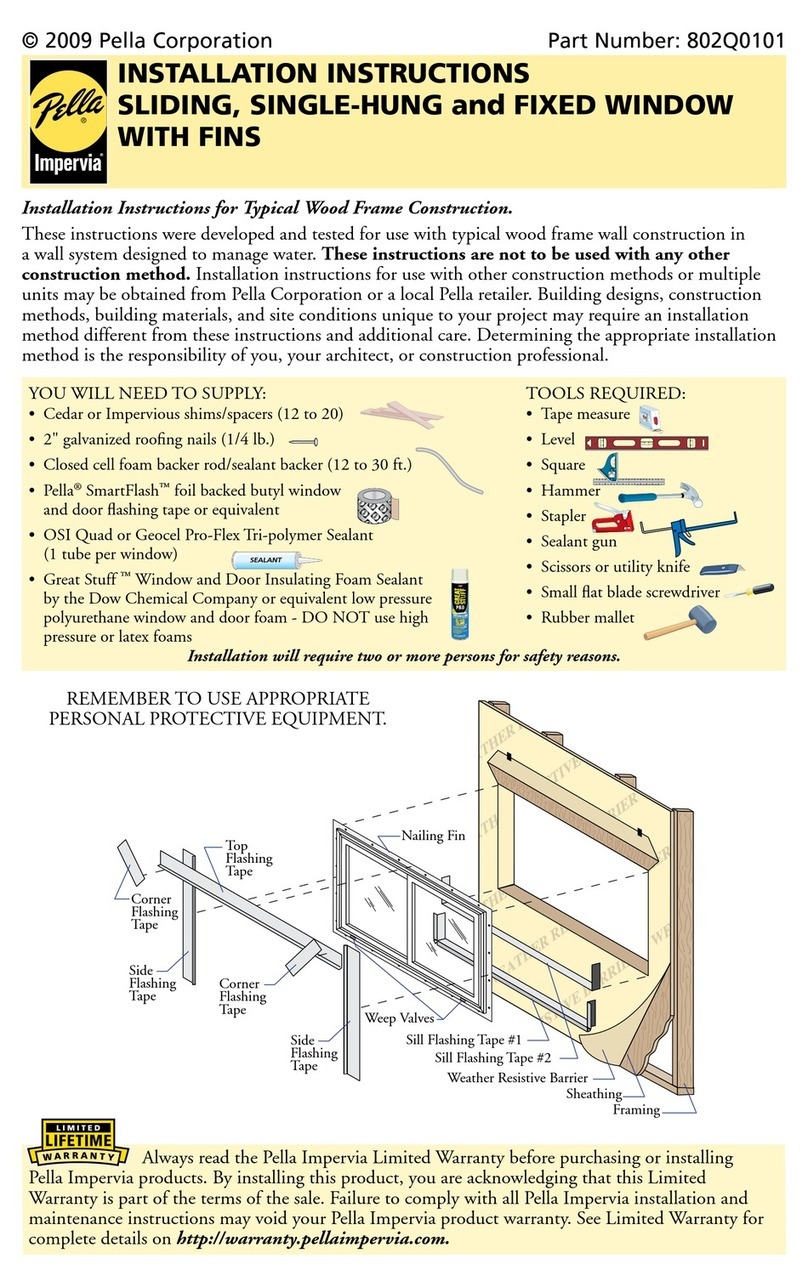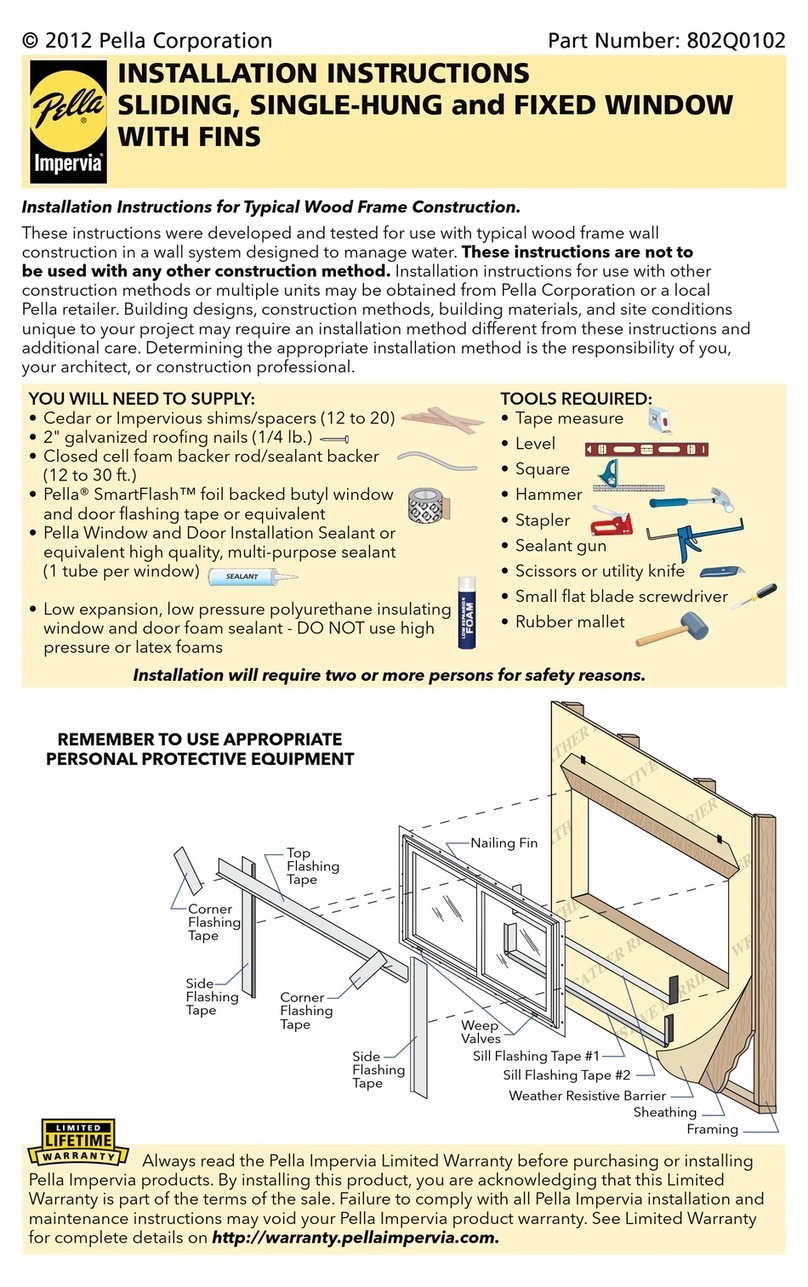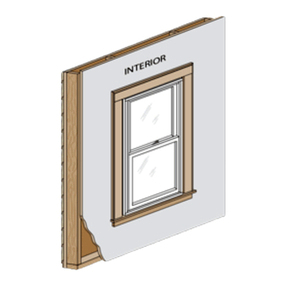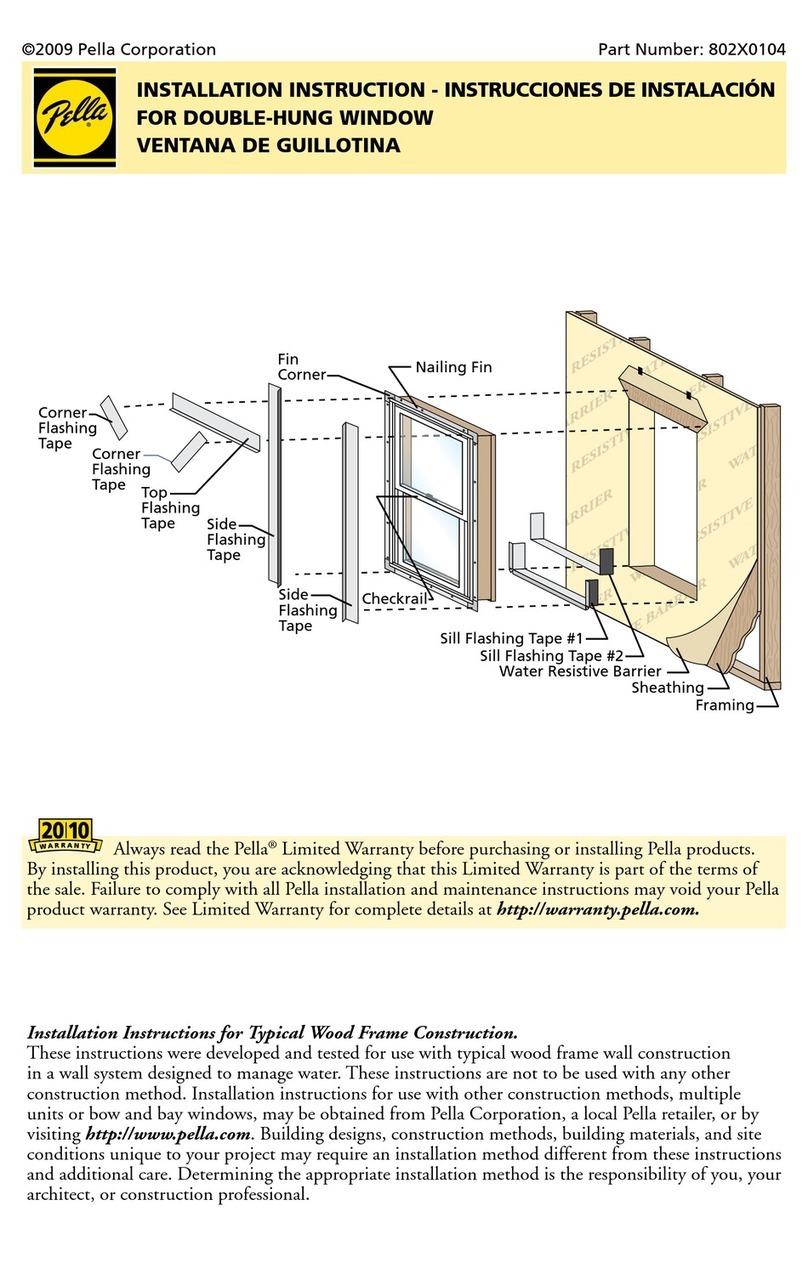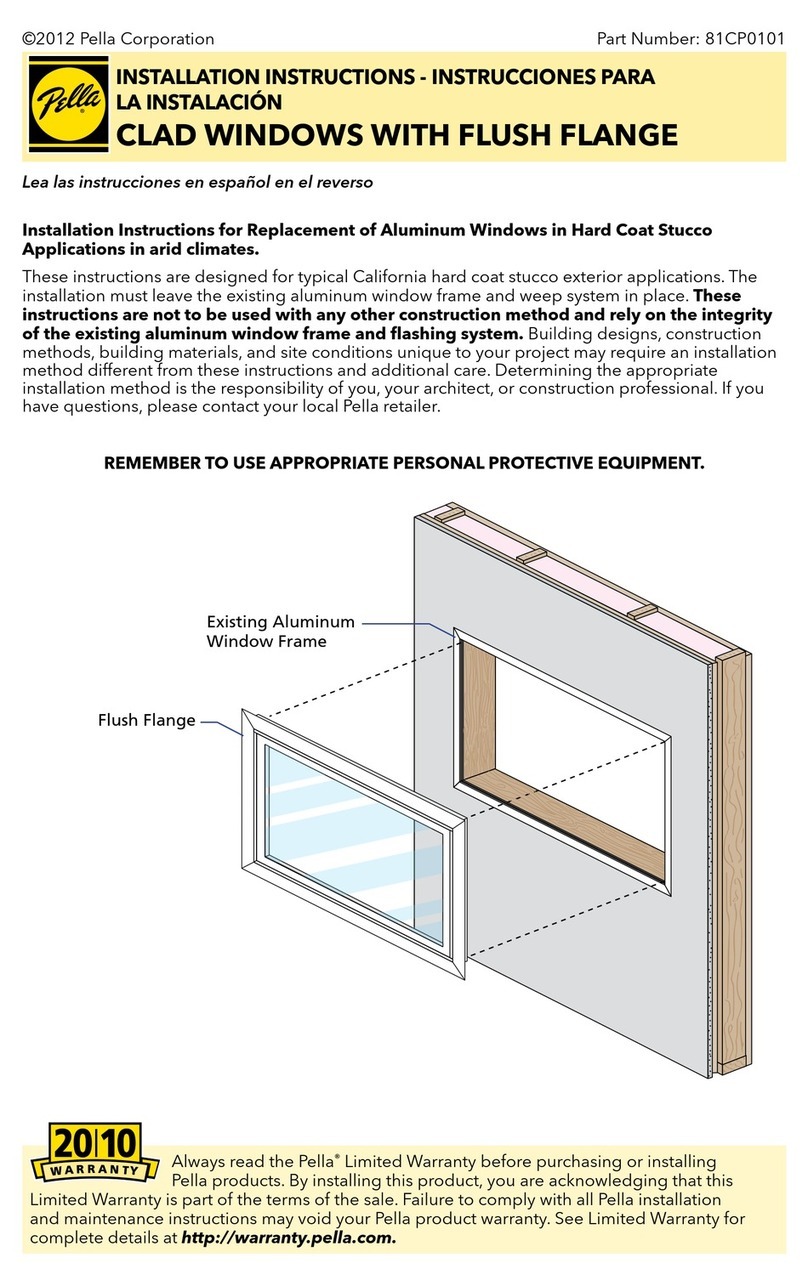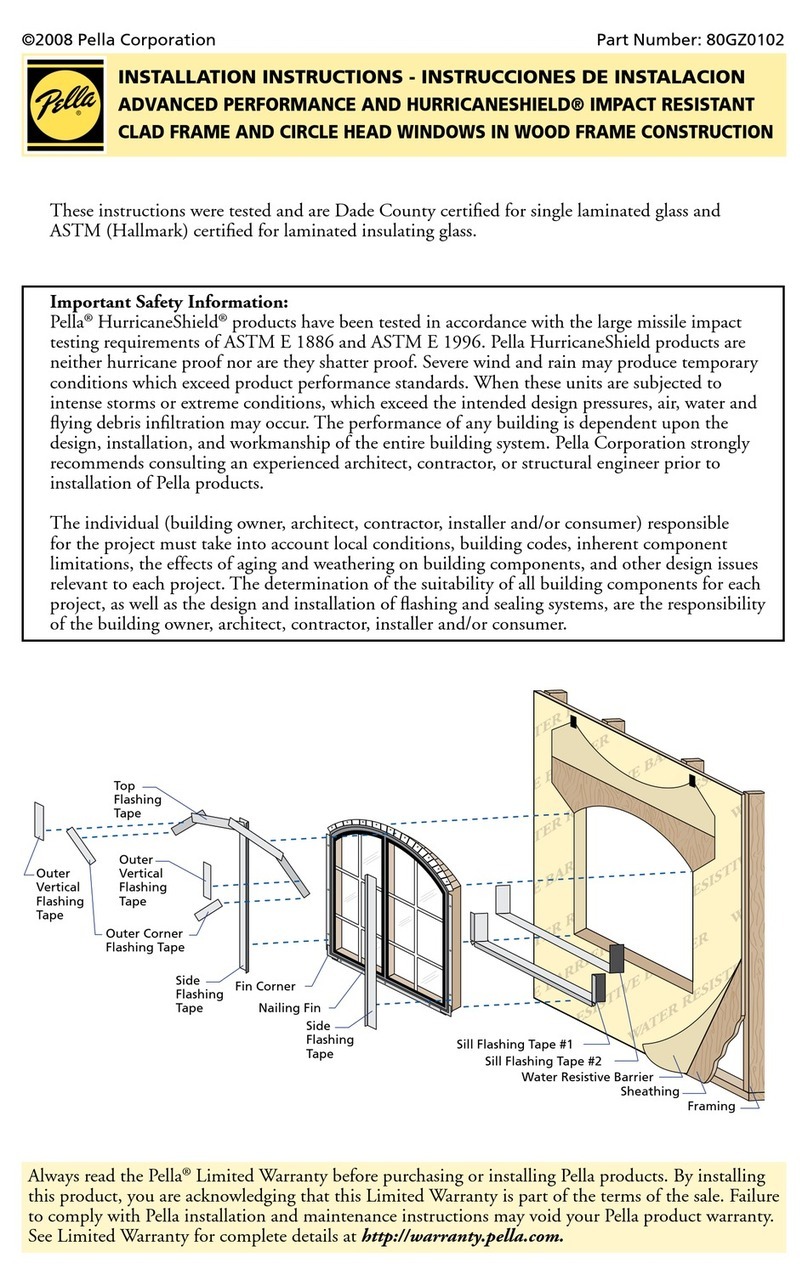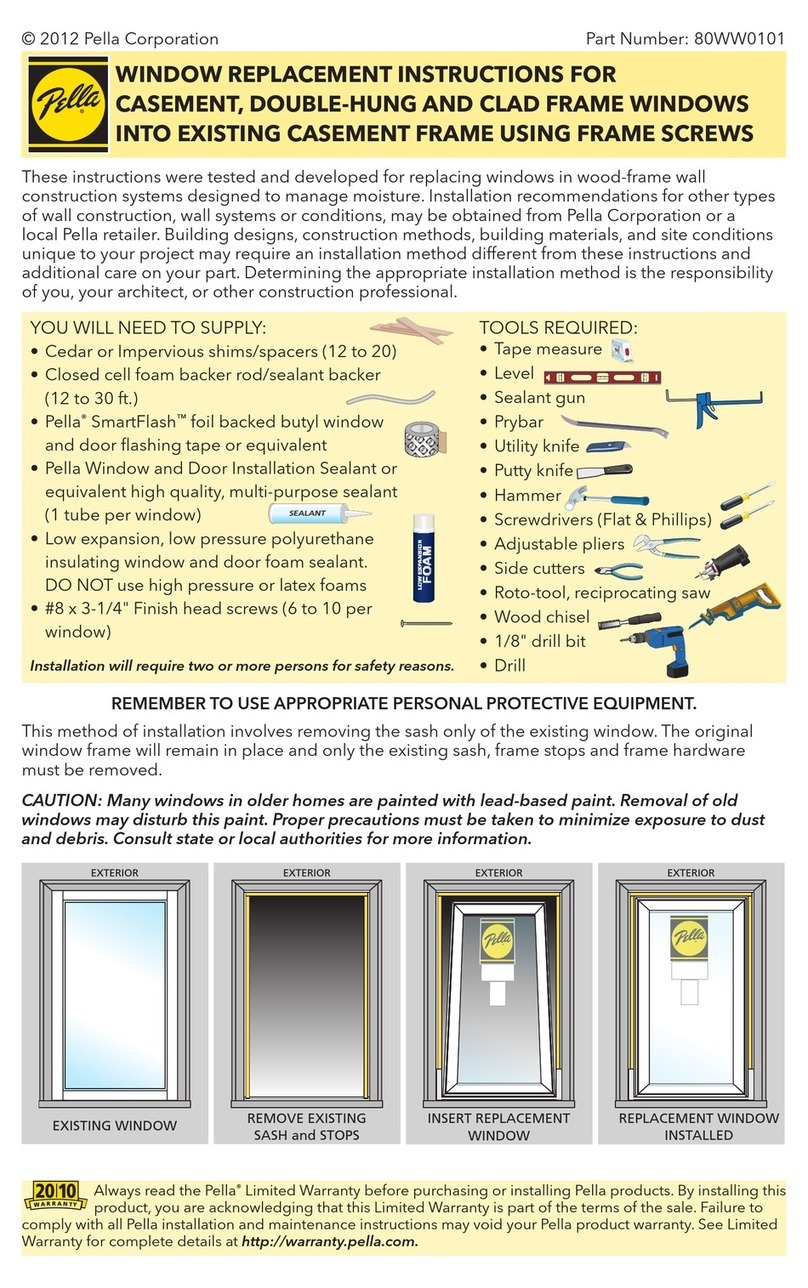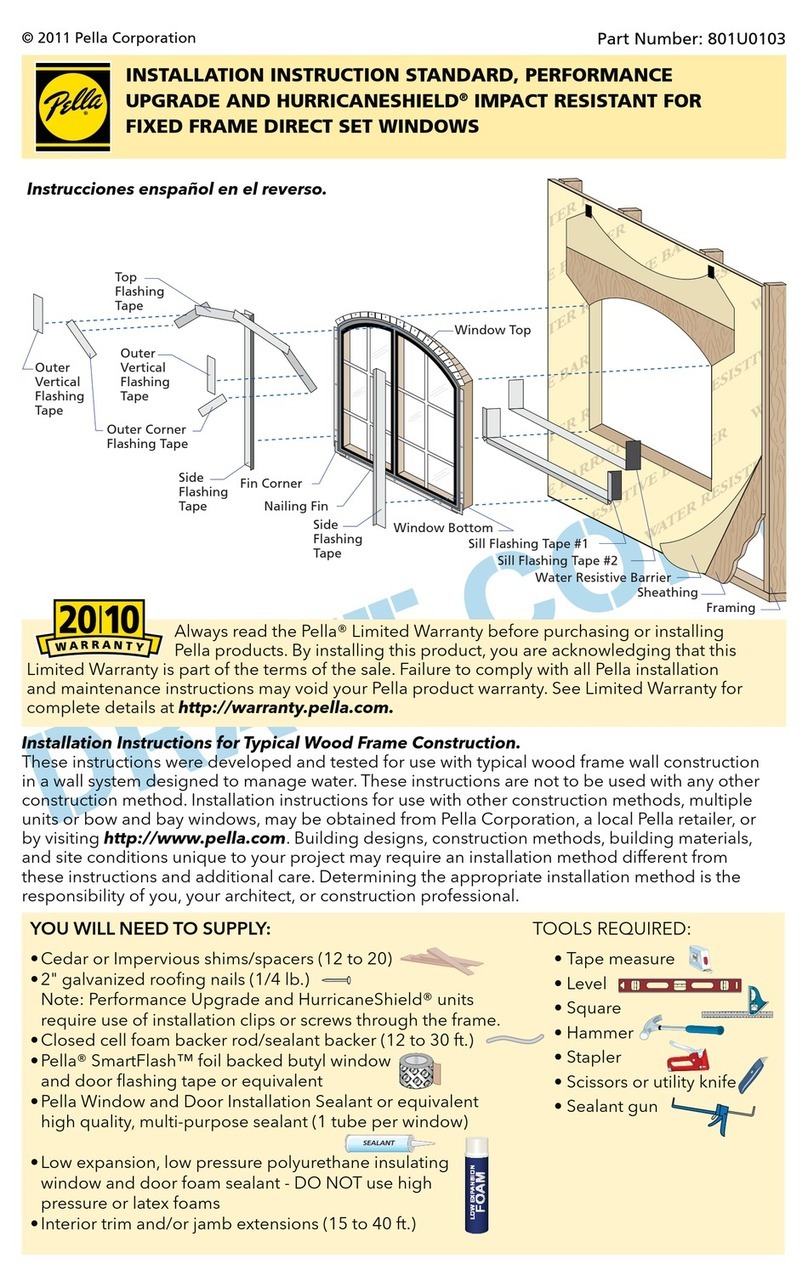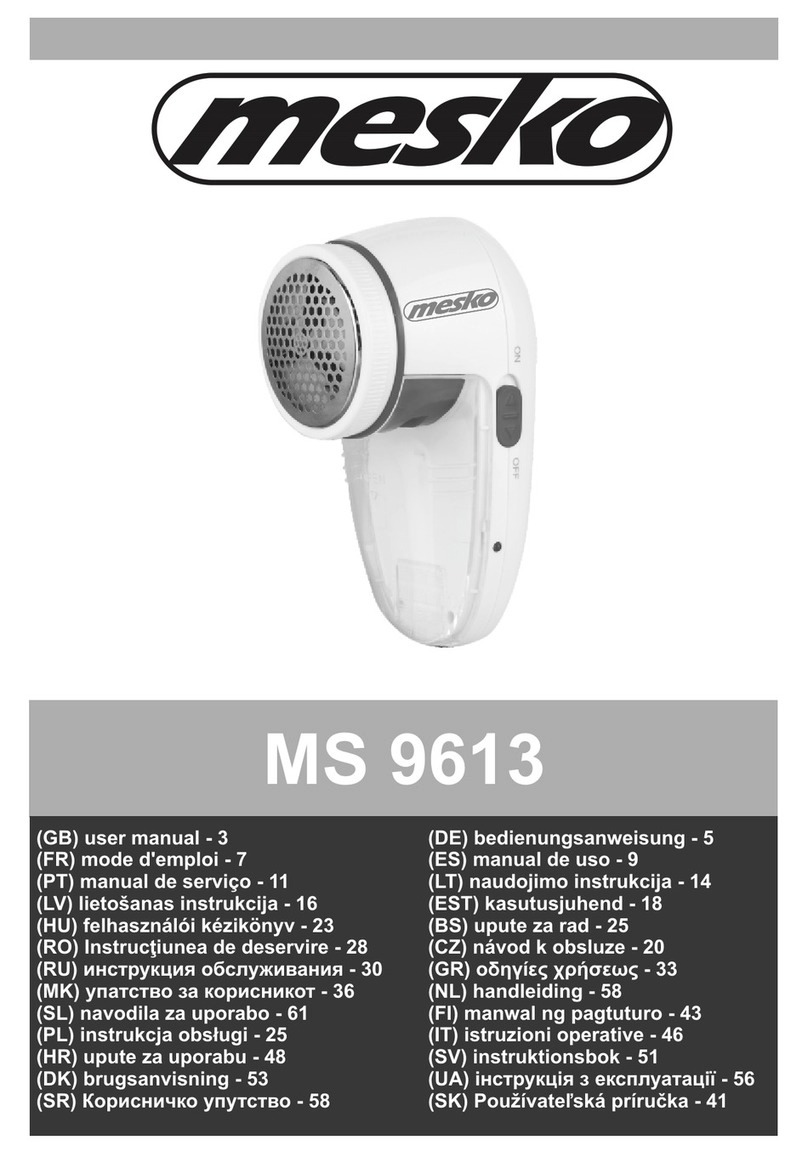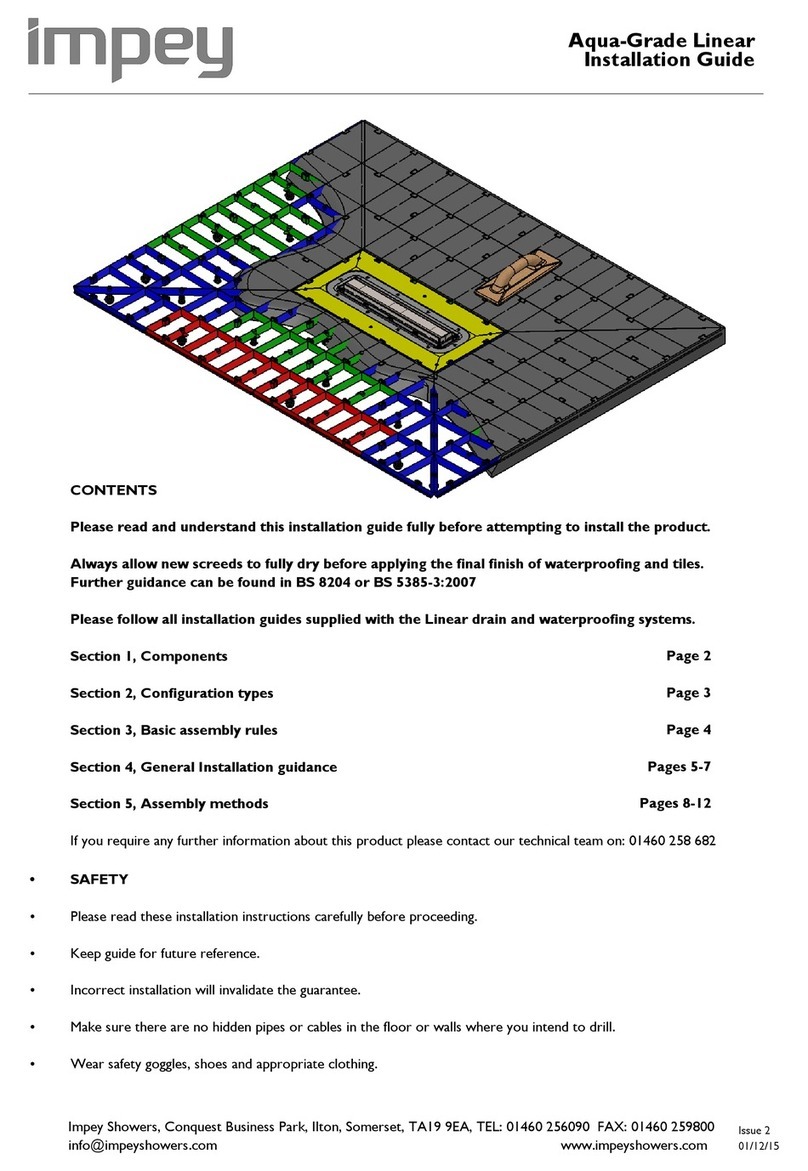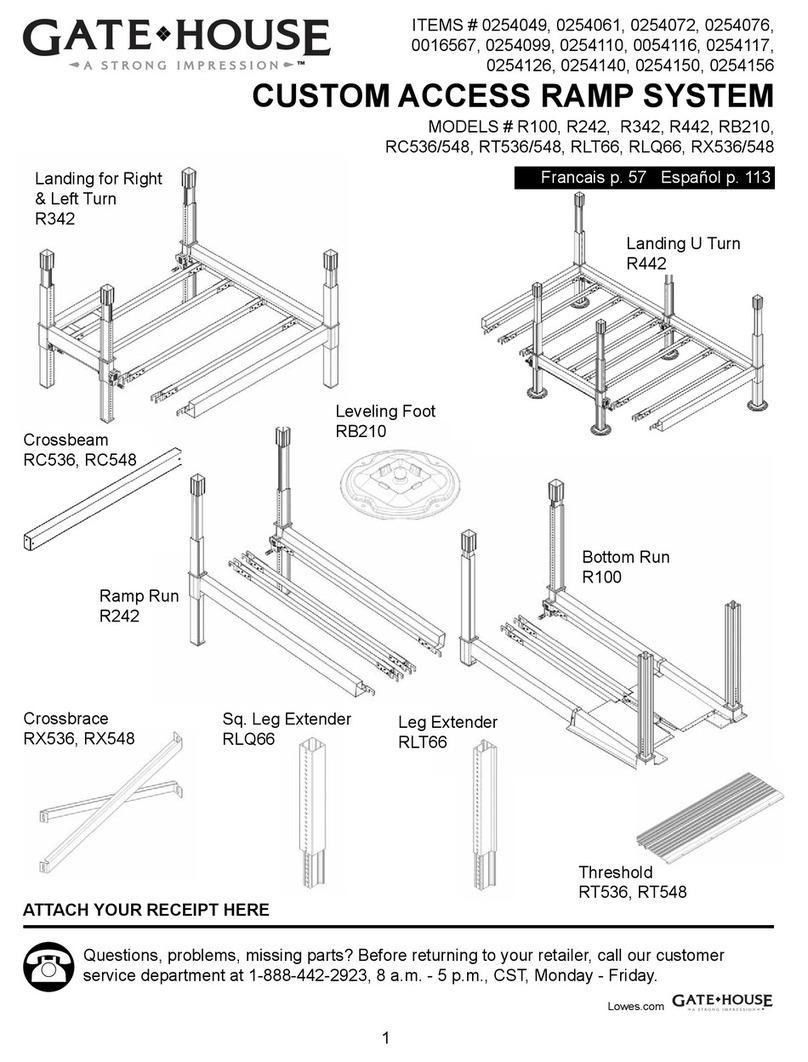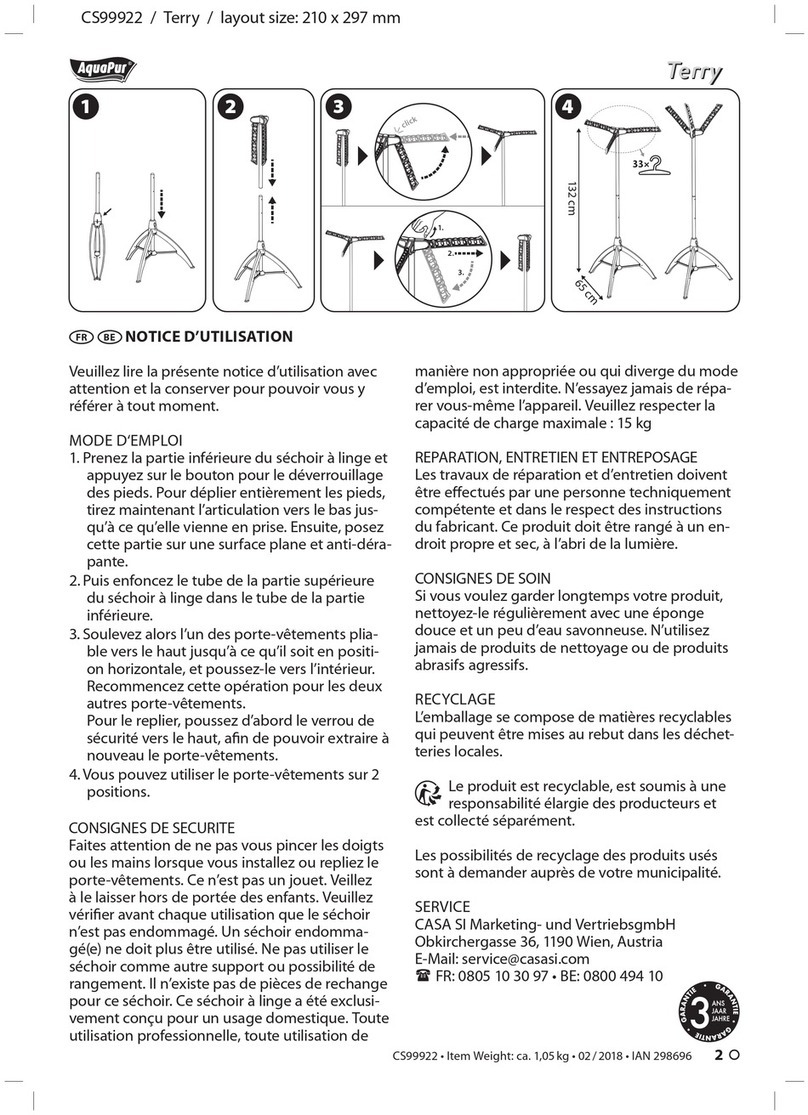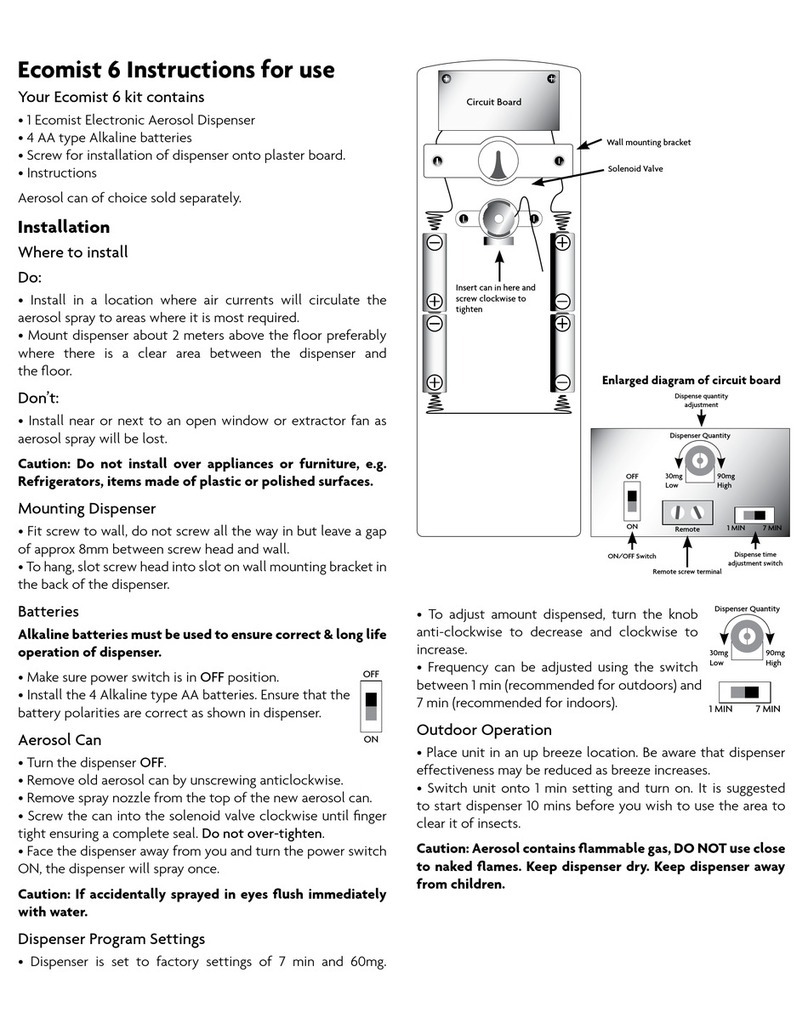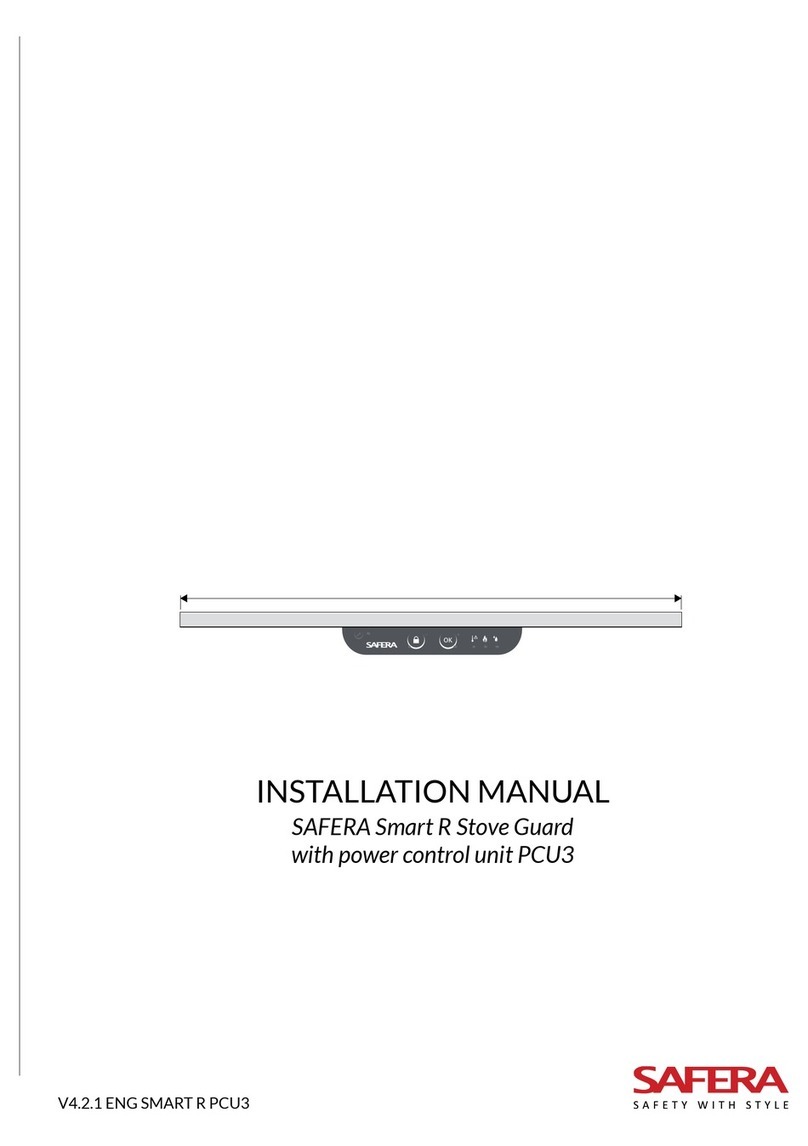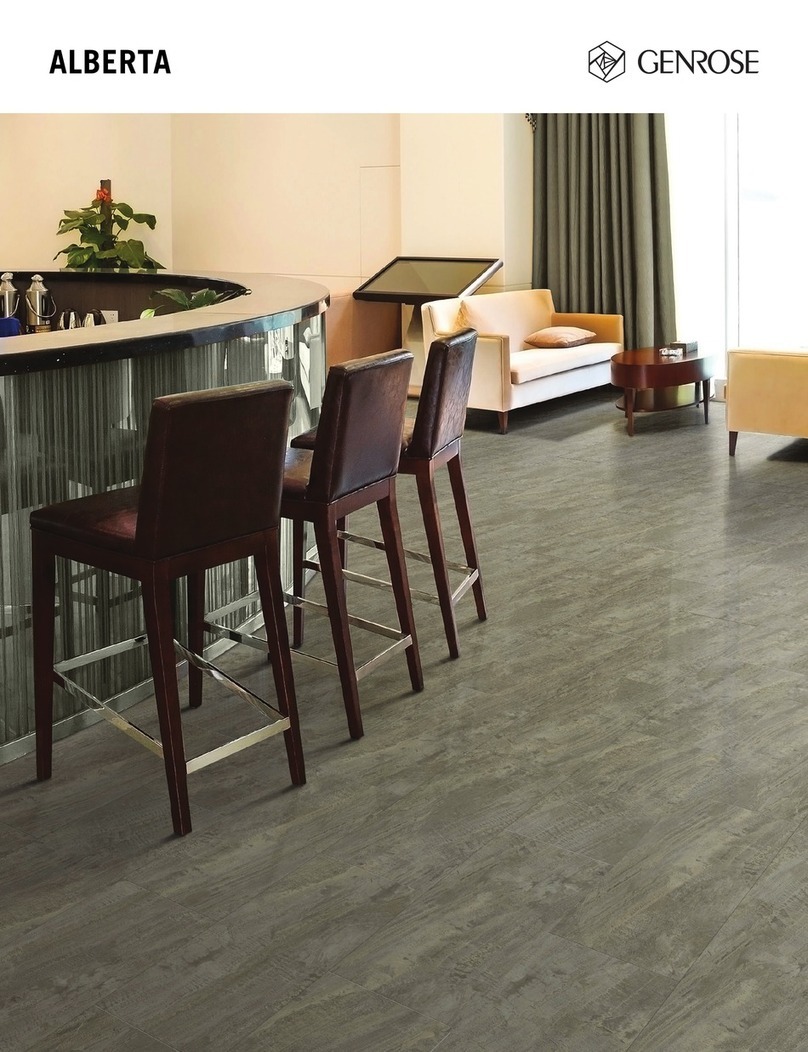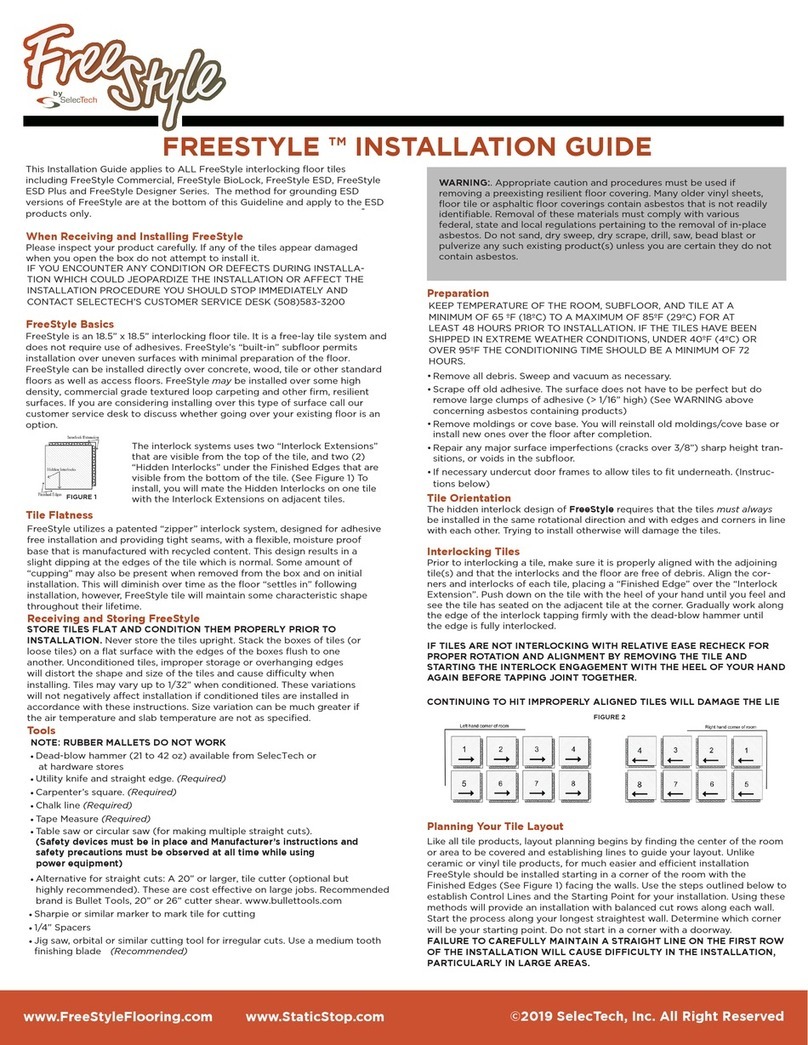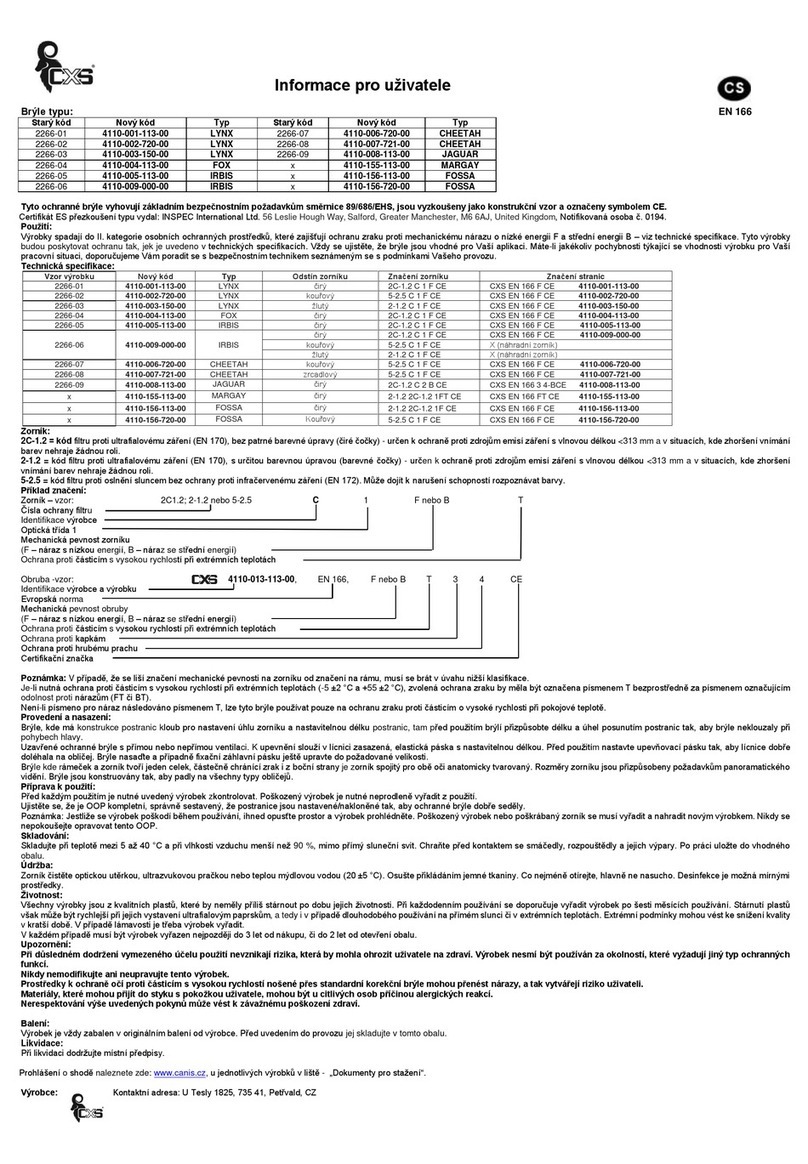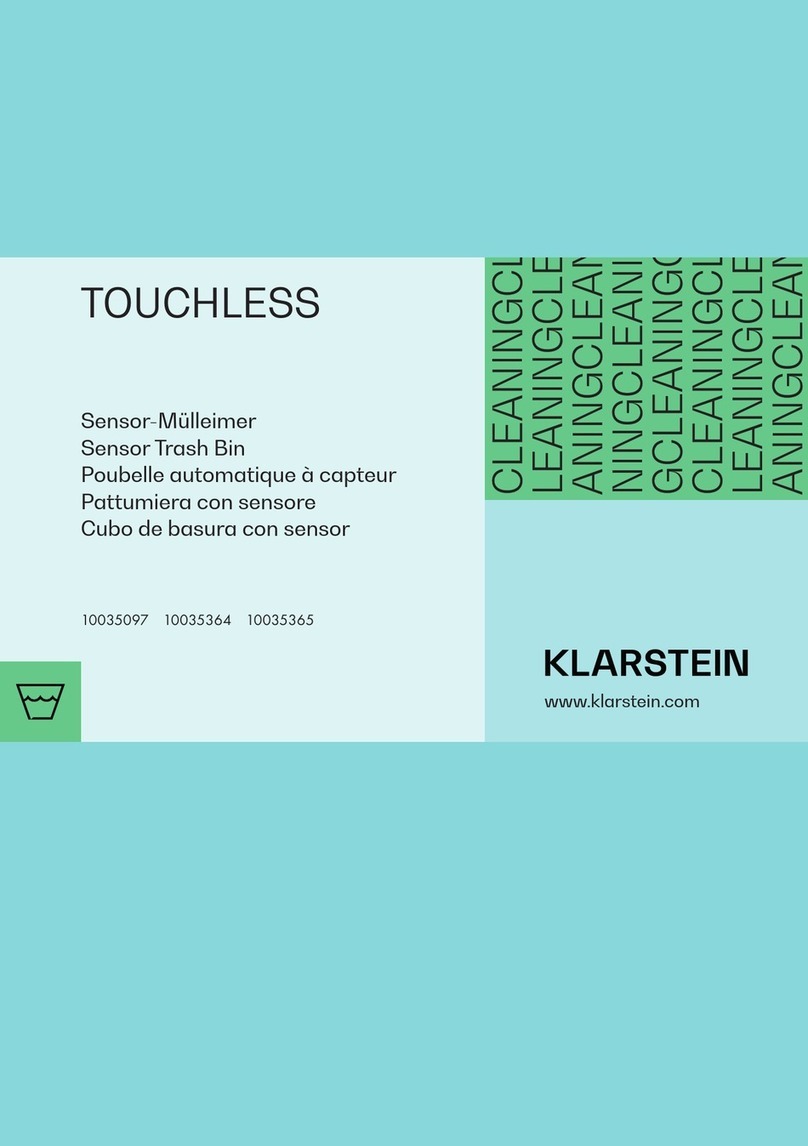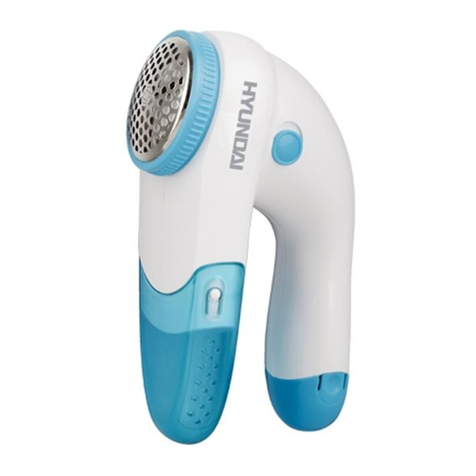Part Number: 80YW0102
These instructions were tested and developed for replacing windows in wood-frame wall
construction systems designed to manage moisture. This method of installation involves removing
the sash, frame stops and frame hardware from the existing window. The original window frame
will remain in place. If existing window frame shows signs of water infiltration or is damaged
beyond repair, this method should not be followed and the entire existing window should
be removed. Installation recommendations for other types of wall construction, wall systems,
conditions, multiple windows or bow/bay windows, may be obtained from Pella Corporation or a
local Pella retailer. Building designs, construction methods, building materials, and site conditions
unique to your project may require an installation method different from these instructions and
additional care on your part. Determining the appropriate installation method is the responsibility
of you, your architect, or other construction professional.
Always read the Pella®Impervia®Limited Warranty before purchasing or
installing Pella Impervia products. By installing this product, you are acknowledging that this
Limited Warranty is part of the terms of the sale. Failure to comply with all Pella Impervia
installation and maintenance instructions may void your Pella Impervia product warranty. See
Limited Warranty for complete details at http://warranty.pellaimpervia.com.
REMEMBER TO USE APPROPRIATE
PERSONAL PROTECTIVE EQUIPMENT.
CAUTION: Many windows in older
homes are painted with lead-based
paint. Removal of old windows may
disturb this paint. Proper precautions
must be taken to minimize exposure
to dust and debris. Consult state or
local authorities for more information.
4JMM"EBQUFS 'MBTIJOH5BQF
&95&3*03
YOU WILL NEED TO SUPPLY:
Ř&HGDURU,PSHUYLRXVVKLPVVSDFHUVWR
Ř&ORVHGFHOOIRDPEDFNHUURGVHDODQWEDFNHU
WRIW
Ř3HOOD®SmartFlash™foil backed butyl window
and door flashing tape or equivalent
Ř3HOOD:LQGRZDQG'RRU,QVWDOODWLRQ6HDODQWRU
equivalent high quality, multi-purpose sealant
WXEHSHUZLQGRZ
Ř/RZH[SDQVLRQORZSUHVVXUHSRO\XUHWKDQH
insulating window and door foam sealant. DO
NOT use high pressure or latex foams
Ř[:RRGVFUHZVWRSHUZLQGRZ
Ř3HOODUHSODFHPHQWZLQGRZVLOODGDSWHU
TOOLS REQUIRED:
Ř7DSHPHDVXUH
Ř/HYHO
Ř6HDODQWJXQ
Ř3U\EDU
Ř8WLOLW\NQLIH
Ř3XWW\NQLIH
Ř+DPPHU
Ř6FUHZGULYHUV)ODW3KLOOLSV
Ř$GMXVWDEOHSOLHUV
Ř6LGHFXWWHUV
Ř5RWRWRROUHFLSURFDWLQJVDZ
Ř:RRGFKLVHO
ŘGULOOELW
Ř'ULOO
Installation will require two or more persons for safety reasons.
4&"-"/5
4&"-"/5
©2009 Pella Corporation
WINDOW REPLACEMENT INSTRUCTIONS FOR SINGLE-HUNG,
DOUBLE-HUNG, CASEMENT, AWNING
INTO EXISTING
DOUBLE-HUNG FRAME USING FRAME SCREWS FROM THE EXTERIOR

